According to You: GM’s 12 biggest missed opportunities
The comments quoted in this article have been edited lightly for clarity and house style. —Ed.
Asked and answered, as they say in trial law. We can’t thank you enough for participating in Hagerty’s According to You series, in which we pose questions to intrigue and possibly enlighten everyone participating. The latest query: What was General Motors’ biggest missed opportunity?
If you are only reading and not commentating, why not make this episode your first contribution? While our answers were rather comprehensive, it would be nice to know if we collectively missed something!
So without any further ado, here are twelve of General Motors’ biggest missed opportunities.
Buying and selling brands

Has GM done too much of this? Hagerty Community member @Reiner frames it well: “Its biggest mistake was selling Lotus. Its second biggest mistake was acquiring Lotus. Its third biggest mistake was selling Opel, Vauxhall, and Saab. Its fourth biggest …”
To which I must proclaim: For all that’s good and right with the world, never forget that GM spent an eye-watering two billion dollars to not buy Fiat. Two billion dollars, I tells ya!
The downsides of “Sloan Culture”

Longtime community member @hyperv6 made us put on our thinking caps. It’s hard to debate what he says.
We here want to pin the mistakes on the models but the truth at GM is the mistakes were made internally in the culture of how the company operated. The Sloan culture was good, as each division had mostly one main model and variations of that model.
As time rolled on, the divisions got more models and more variations of each model. This led to overlaps and competition between the divisions, and often mismanagement of these divisions. Then when GM rolled into the corporate-platform era, it began to lose money and make cars that really became just styling exercises and not specific models.
The divisions were always fighting each other. Chevy got the lead as it was stated they sold more cars so they got more say. Pontiac has many success over the years but nearly every one of them were due to breaking rules and lying to the corporation. The GTO broke the engine size rule. The SD-455, more broken rules. The Fiero was canceled and hidden till Pontiac could get it approved.
The now famed Trans Am hood decal was rejected by Bill Mitchell. So John Shinnella took the SD-455 Trans Am prototype and painted it black with gold stripes, just as Bill’s favorite bike, a John Player Special-liveried Norton. He then gave the car to Bill for him to drive. The paint and decal were approved.
It is sad but reform started with Bob Lutz, and cleaning up the cultural issues at GM continues to this day. This is why there were so many mistakes, and that’s why the company went broke. While not perfect today GM is much better, and it will be OK.
1923 Copper-Cooled Chevrolet

John wishes us to never forget a vehicle from 100 years ago. That’s right, a full century has passed since the 1923 Copper-Cooled Chevrolets hit the road, and they didn’t represent Charles Kettering’s proudest moment. Luckily he overcame this mistake to make the overhead valve V-8 just two decades later.
Community member @Mike agrees and adds a fantastic backstory to the equation.
The 1922 Copper-Cooled Chevrolet was rapidly discontinued and recalled (the only GM car ever to have a 100 percent recall) due to uneven cooling caused by poor cooling-fan design—front cylinders ran cool, rear cylinders ran hot.
In 1921, a Dayton inventor showed the GM folks his air-cooled engine design (SOHC, sodium-cooled valves) that used a squirrel-cage blower and calibrated ducting that provided even cooling front to back. GM didn’t listen, as it already had Boss Kettering’s design, which just had to be the right answer. History disproved that. Had Paul’s alternative design been adopted, air cooling might have come to GM 38 years sooner …
Ho-hum Hummer

The aptly named @Hummer H3 Owner wants to remind us that the Hummer used to be an exciting off-road vehicle for people with more limited budgets and not a massive flagship with a much smaller following. (For a bit of alternate history, check out this article about a pair of ill-fated 2000s concepts that might have saved Hummer brand. —Ed.)
Dropping the Hummer idea completely and never coming back with a mid-size, off-road SUV immediately after the turnaround was a mistake. The Hummer crowd is remarkably loyal and dedicated. The H3 adventure package put some real pressure on Jeep and the V-8 Alphas were and maybe still are impressive. The H3T on the other hand was simply ahead of its time.
And our very own @hyperv6 gives fascinating insight to go with this: “Hummer never should have been a brand. It should have been part of GMC. That has been corrected today: Bob Lutz said it was one of his greatest errors.”
Killing the Metro
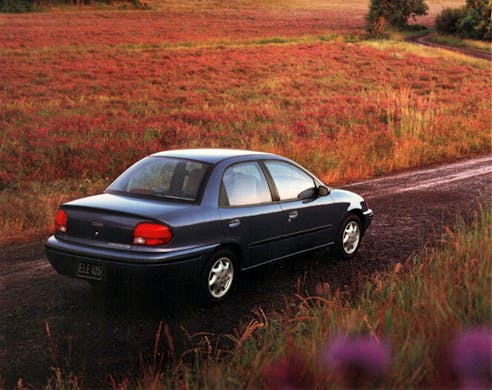
In the same vein as my foray into this question, the GM EV1, Jerry wants us to consider the “lowly, lovely Metro.” Or, as he puts it: “I bought my Metro nearly 30 years ago and got 45+ mpg. Nothing available comes close today. [Especially for its $8000-ish price tag, before discounts and incentives. — SM] What happened?”
Beholden to Holden?
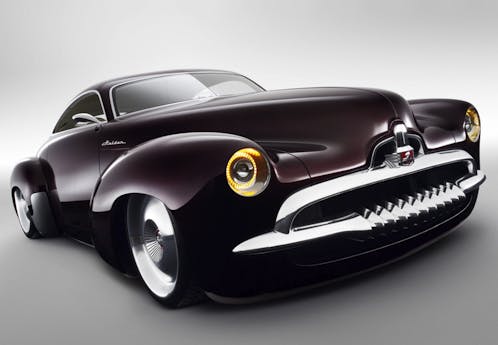
Richard has admiration for GM’s creations from the Land Down Under, and thinks Holden’s failure to launch was another one of GM’s big mistakes. Hard to argue with this!
I agree with most of the opinions here, but I really think that GM missed an opportunity by not importing the Australian line of Holdens to sell here as Holdens. GM already owned the factory, the cars were good, and I believe with proper marketing the line would have been successful, selling more cars and possibly saving the Holden brand from extinction, as well.
Even when it did bring in the Pontiac G8 and the Chevrolet SS, GM never really marketed them properly. Holden also had smaller, less expensive, civilian-quality cars as well that would have created a lot of interest.
Misguided minivans
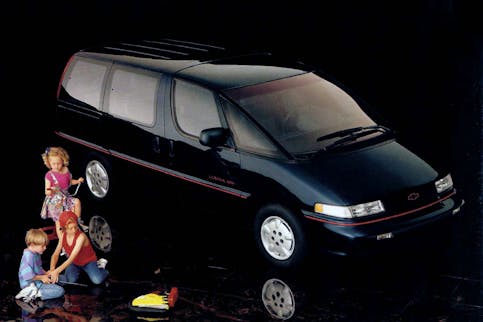
Vince says: “Let’s talk minivans. Trying to peddle the Chevy Astro van, followed by the Dustbusters from Pontiac, Olds, and Chevrolet, was a disaster. Talk about blowing it in the hottest segment in the mid-’80s throughout the ’90s.”
Hard to disagree with this, as Chrysler’s success was unanswered for so many years!
PhD-level bean-counting

Hagerty Community member @ParaboTech hits on a common theme we hear elsewhere, as the notion that overly cost conscious accountants (i.e. bean counters) are a big problem in the halls of General Motors.
With GM, it always seemed to be about the number crunchers. I can understand about 2008–9 era with bankruptcy at the door. But, if the GM powers really were into cars, they would’ve found a way to continue with Camaro way back then and also Fiero. Solstice and Sky were probably a tough sell at the time. Still would’ve been great to continue those two.
But @TG offers a good counterpoint: “I think John Z. DeLorean discovered what happens when you go the other extreme and cut the number crunchers and marketers out of the equation. They may have too much control sometimes … but they are there for a reason.”
The “not invented here” fallacy
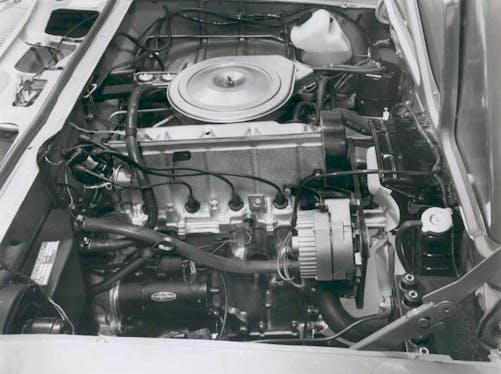
@Moparman gives this notion a twist, while offering the Chevy Vega’s 2300 engine as proof.
I’ll add the “designed by committee” problem, including the Vega being sacrificed on the altar of the bean counter. GM had a chance to make inroads against the import market, but the opportunity was squandered due to the refusal to use proven tech because of the “NIH” (not invented here) syndrome.
GM foisted dicey new tech to buyers with inadequate cooling, and no rust protection. It soured the consumer on what was actually a stylish small car that woulda, coulda, shoulda been a champion in the market.
Corvair and Fiero neglect
Does it seem logical to lump the Chevrolet Corvair and the Pontiac Fiero together? Both were significantly different than anything else available from GM in their respective time periods, so that’s perhaps why so many folks feel this way.
@Kern: I do not know if they would be considered the biggest missed opportunities or not, but I consider the second-generation Corvair and the 1988 Pontiac Fiero as innovative and leading-edge products in their time. As an automotive engineer, they are the only two GM products that I considered for my automotive collection.
@Dean: Not advancing the Corvair and Fiero. Both were so close yet so far from the promise they had. And I owned one of each.
@hyperv6 (in reply to @Dean): You have to consider the Corvair was very expensive to build versus a cheaper V-8 Camaro.
Also emissions regulations killed air-cooled engines. The Fiero was killed by the Corvette people; they feared sales being lost to a more powerful Fiero that was coming.
@Thomas: A multi Corvair owner (two Corsas and two vans), I am qualified to say that when the car-buying public sees near-new cars with oily rear ends, a certain stigma is generated. Viton pushrod tube seals were available but GM went with cheaper neoprene rings instead. Bad decision.
Also, and perhaps even more important from a legacy and lawsuit standpoint, was its decision to ignore the benefits of the supplementary transverse rear spring, which GM finally adopted and made standard for 1964 just one year before the complete rear-end redesign.
@Mike: Second-series Corvair. Exquisite design, fully independent rear suspension (not swing axle—take that, Ralph Nader!) and the worst of the oil leaks/popped fan belts of the earlier cars cured. And available with a turbo, like the first-series cars. Instead of touting all the improvements—both appearance-wise and mechanically—GM folded under Nader’s bad publicity and slunk away.
Playing it safe

Hagerty Community member @Perpetually Unimpressed thinks GM coulda taken more risks.
GM’s biggest missed opportunity has always been playing it safe. You want a company that commits to innovation? Go to Ford. Between company-wide racing bans, V-8 tech that hasn’t really changed since 1955 (new C8 flat-plane DOHC V-8 notwithstanding), timid rollout and commitment to EVs, and half-hearted development of truly interesting and innovative cars, risk is something to which GM seems chronically averse.
The big picture
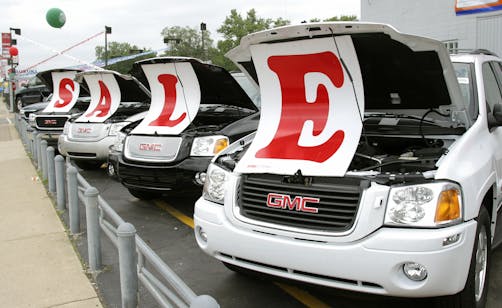
Perhaps Dale said it best, because it’s likely not one vehicle, one brand, one person, or one department of employees that inspired our initial question.
The missed opportunities happened much earlier than we realize. In the early 1960s, the connection between the “car guys” and “tech guys” promoted innovation and a product stream that dominated the market. The increasing control of the financial side of the company strangled both, often forcing key innovators out of the company or burying them, leading to ever more control by the bean counters and the eventual collapse of the company.
Divisions lost the incentive to innovate because they were marketing fronts only. Labor relations deteriorated, because when money is the only thing that matters, it’s where all the attention goes on all fronts. The more cost-focused the company became, the more innovation became buried and that led to losing more market share … and money. The diversification into Electronic Data Systems (EDS), Hughes, was a typical distraction for companies that lose their way in their primary arena.
***
Check out the Hagerty Media homepage so you don’t miss a single story, or better yet, bookmark it. To get our best stories delivered right to your inbox, subscribe to our newsletters.
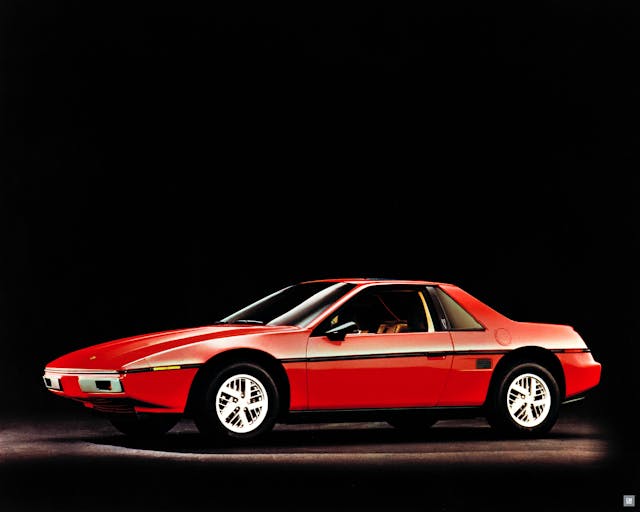

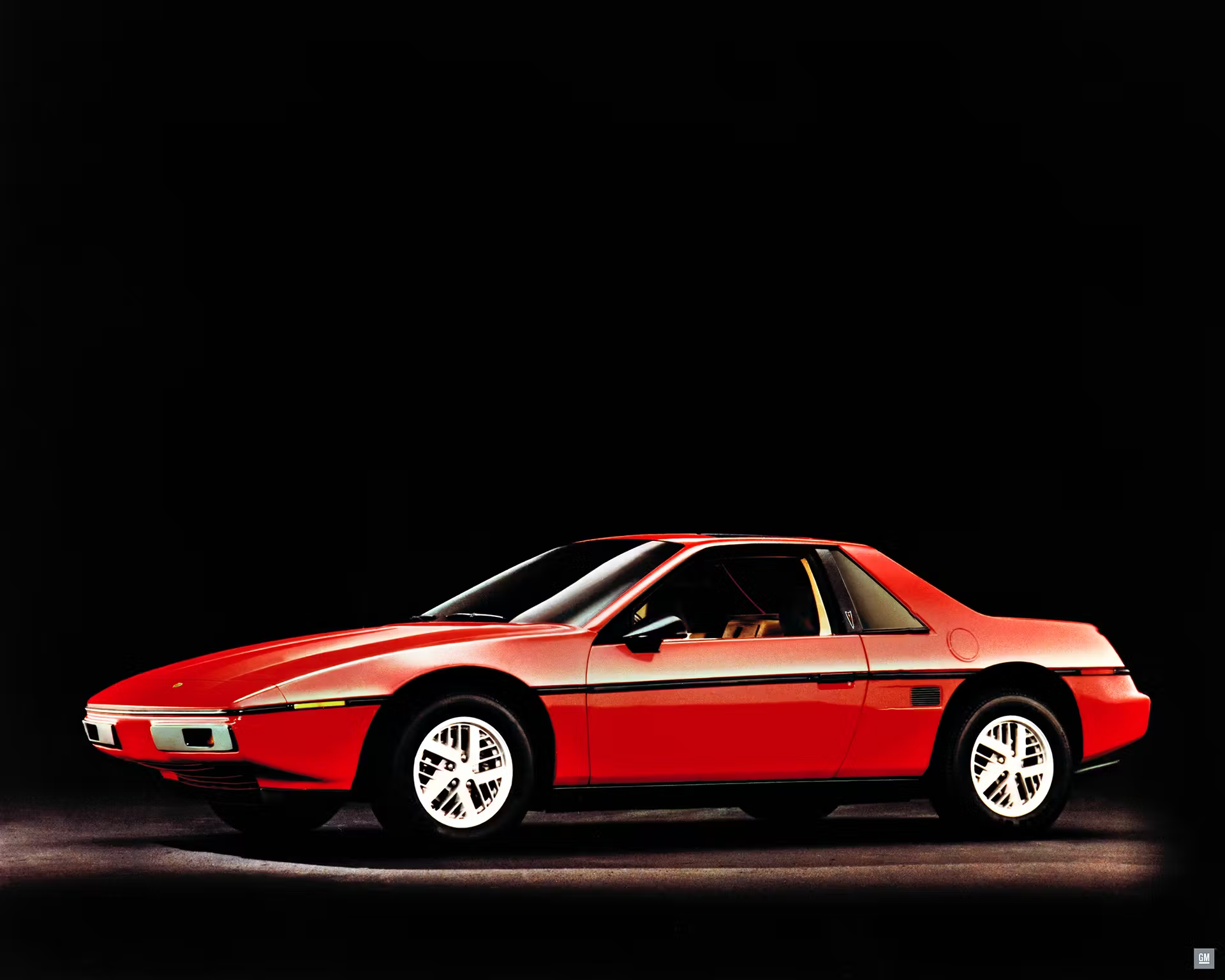


The largest issue with the Sloan model was both time and technology. Once upon a time, when “good”, “better”, and “best”, were determined by largely by perception and glitzy add-ons, the model worked well for GM. Every division stayed in it’s lane. Not that GM was only company to dip it’s toes into the brand hierarchy model of the “up-sell”, Ford, Chrysler, and many foreign brands tried the same model.
Brand divisions, began to blur when platforms began to be shared among other aspects. The consumer wasn’t that dim…or maybe they were? Anyway, fast forward to the past couple of decades, and one can see how this stratified model just doesn’t make any sense anymore.
I’ve written about this before, but one major missed opportunity was the GM – Deere and CO diesel engine situation. GM wanted a medium duty diesel in their new GMT400 trucks that would provide more performance and better emissions than the old 6.2.
GM refused to consider a solid axle for the over 8600 GVWR trucks and Deere refused to make the engine castings any lighter. The impasse left GM flat-footed with the Cummins Dodge partnership and the Ford Navistar partnership. Even the 6.5 turbo diesel was an underwhelming performer compared to the 7.3 power stroke and Cummins. 14 years later this changed with the Duramax, but many customers already fled to other automakers because of the HD trucks.
The Deere diesels were very similar to the Cummins – de-rated for truck use, well overbuilt, and would have been significantly more reliable.
Gale Banks factory turbo kits helped the 6.2 a little, but still not enough to make up the difference.
No mention of the Pontiac Solstice/Saturn Sky. Nothing really exciting but, I remember that within months of their debut there were articles about transplanting Corvette engines into them. All the power of a Corvette at half the price. No wonder GM said “stop” and killed these cars.
Like my dad said “Just digging up bones”
Great stuff!
I know it’s not GM, but it demonstrates the ‘not invented here’ category wasn’t unique to them. One of the biggest mistakes when it come to roadsters: Chrysler dumping the Tiger when it purchased Rootes/Sunbeam because it didn’t have a V-8 that would fit.
Two big mistakes, having a fire sale and getting rid of Hughes and GMAC. There were cash cows that required a small labor and facility commitment. Nearly every auto and truck sale require financing and that provides a captive customer base.
What about Pontiac’s OHC 6 cylinder? Seems like Delorean made good at the wrong time again. Strange this engine was never resurrected during the gas crunch.
Gave away the EV-1.Now the future is here and its electric.Well done GM,and you OWNED that market,now just a bunch of electric failures.GM,Ford,and Stellantis are toast.No loss,bring in the Chinese innovation,they will own motoring.So be it,oil economy is going away and the electric economy is replacing it.Like it or not,its the reality.Do they have no futurists that can see the obvious handwriting on the wall??
LiFePo4 is a world changer and no telling whats next.But it will be the Chinese making it work,Tesla will use the Chinese batteries/tech (couldnt compete on innovation in house) and the rest? Their hubris thinking they can make better batteries that are dangerous,expensive and will still outpace the reliable Chinese batts….thats a loser if their ever was one,bye bye legacy motors,you are todays dinosaurs.
Mine would be GM(Pontiac) with Holden. The GTO’s and the G8’s were just about to take off and then they’re gone!:( Imagine getting the Ute from Australia, with a V6/LS. What would you get? Drumroll please……….
The retro redesigned ElCameno and SS trim level!! Totally a big missed opportunity in my opinion. Oh, can’t forget the PPV Caprice either. It would be under the same category too. All are LS powered vehicles, with a plethora of aftermarket parts. Can you say street contenders if done correctly:))
The 1965 Corvair Corsa Turbo with its Flat 6 cylinder, turbochaged, air cooled, mounted in the rear, 4 speed stick, fully independent suspension, and drop dead good looks, was copied 9 years later by Porsche with their 930 Porsche Turbo. That car was what the Corsa could have become with 9 years of changes. All the things that Chevy was criticized for were the same things Porsche was praised for. The 1978 Corsa could have been the car we lusted after. We let some two bit lawyer and some amateur car experts dictate what we wanted.
As someone who hails from Down Under, I can’t help but agree with the comments about Holden. However, I think the saga runs deeper than most people first realized. That GM should import the Australian Monaro and stick Pontiac GTO badges on it was a monumental marketing mistake. The Monaro was a genuinely great car, but it wasn’t a GTO. GM lumbered an unknown car with the weight of expectation of an iconic model before it turned a wheel on American soil, virtually guaranteeing the model would fail.
The Commodore-based Chevrolet SS was another marketing disaster. The SS badge has always been an options pack on various GM models, from the Chevelle to the Camaro. It was never intended as a standalone model, relegating the car to orphan status from Day One.
However, the ultimate demise of Holden can not be laid squarely at the feet of GM America. Local management failed to recognize local market trends which saw buyers turning their backs on traditional sedans and station wagons in favor of SUVs. Holden’s management blundered on under an ego-driven belief that they were right and the customer was wrong. By the time they realized the failure of this approach, the situation had deteriorated beyond the point of no return. Australia lost an iconic brand, and many motoring enthusiasts will lament that loss for the rest of their lives.
Trying to categorize GM’s mistakes is like trying to categorize mankind’s sins.. it’s a long long list!
So true. 🙂 So true!
I’m surprised your article never mentioned how gubt. bureaucratic and political overreach with useless and costly regulations is the root cause for most of the problems the auto industry has experienced since the late 1960s. “Safety” regs, CAFE standards, 5 mph bumper regs, ignition interlocks etc etc have caused many more problems than they solved. This continues with the gubt EV mandate and GM is going over the cliff in their “everybody in” strategy to force consumers to purchase EVs. In another 10 years we will be watching taxpayers once again bail out politically connected stakeholders in GM for a second time as they bankrupt themselves investing billions of dollars in this grotesque fantasy of EV sustainability. Ford appears to be headed in this direction also but the good news is at least they will only be bailed out the first time.
Dropping the Corvair wasn’t a mistake. I agree, the second gen Corvairs are great cars and look fantastic. The fact is, however, that it shared little with any other GM products, which made it expensive to build, and it wasn’t selling well enough to be a brand of it’s own, especially in the economy car market of the time.